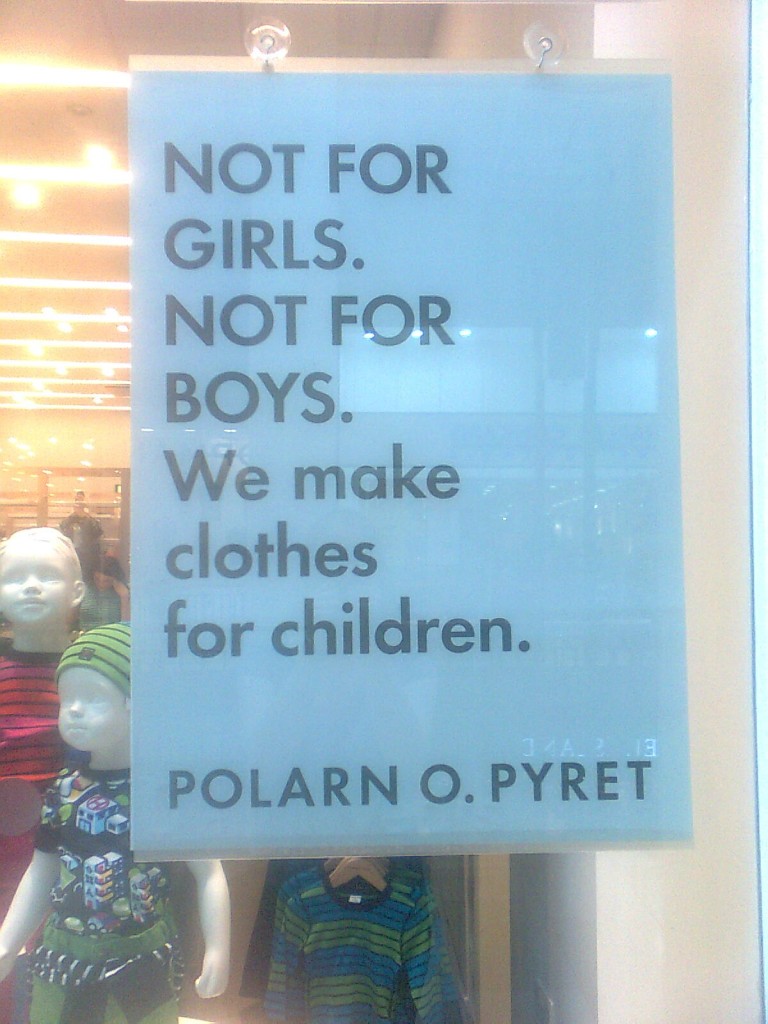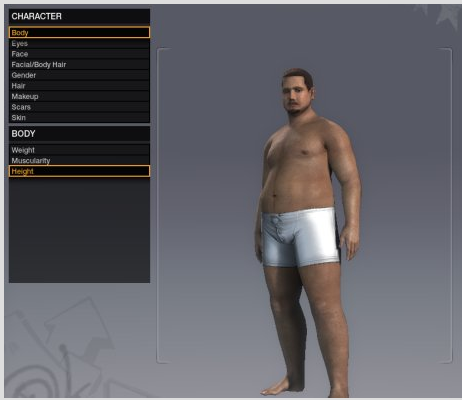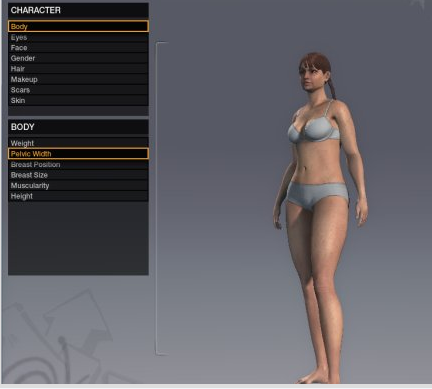Cross-posted at Jezebel.
With the exception of the t-shirt (which only masquerades as gender neutral), in the U.S. clothes are designed for women or men, but never both. Department stores and retail stores (unless they sell only men’s or women’s clothing) have separate men’s and women’s sections in the store. There is no option to buy clothes, one must buy women’s or men’s clothes.
This is even true for children’s clothes. One might make the argument that adult males and females have different bodies (an argument I might argue with), but we can’t say that pre-pubertal children do. Nevertheless, the cultural rules that require boys and men to dress differently than girls and women make such a clothing line seem impossible.
Well, Evie sent in an example of a UK clothing company trying to do the impossible. The company, Polarn O. Pyret, explains:
Our unisex collection (UNI) consists of clothing that is based on situation and function rather than on gender. As a clothing manufacturer, we want to make it our responsibility to offer an alternative to clothing that is based on gender. There is really no reason to design different models and fits for small boys and girls since there is no great difference in the way their bodies are shaped. We have taken an overall approach to unisex clothing, and consider not only color but also pattern and fit.
Evie’s attention was drawn by this ad in a store window:
Their website, you’ll notice, doesn’t have the regular “girls” and “boys” section seen ubiquitously:
This company is nice evidence that the-way-it-is isn’t the-way-it-has-to-be.
UPDATE: Mary and Cheryl pointed out that, if you click on “babies” or either of the “kids” tabs, you get the option of “boys,” “girls,” or “uni” (unisex) lines. So the company isn’t making a principled stand here. They’re still willing to take the money of parents who want to dress their kids in gendered clothes, but they are offering an alternative for those parents who don’t. It’s pretty telling that even this strategy — offering a unisex line alongside girls and boys lines — is so rare.
Lisa Wade, PhD is an Associate Professor at Tulane University. She is the author of American Hookup, a book about college sexual culture; a textbook about gender; and a forthcoming introductory text: Terrible Magnificent Sociology. You can follow her on Twitter and Instagram.



























